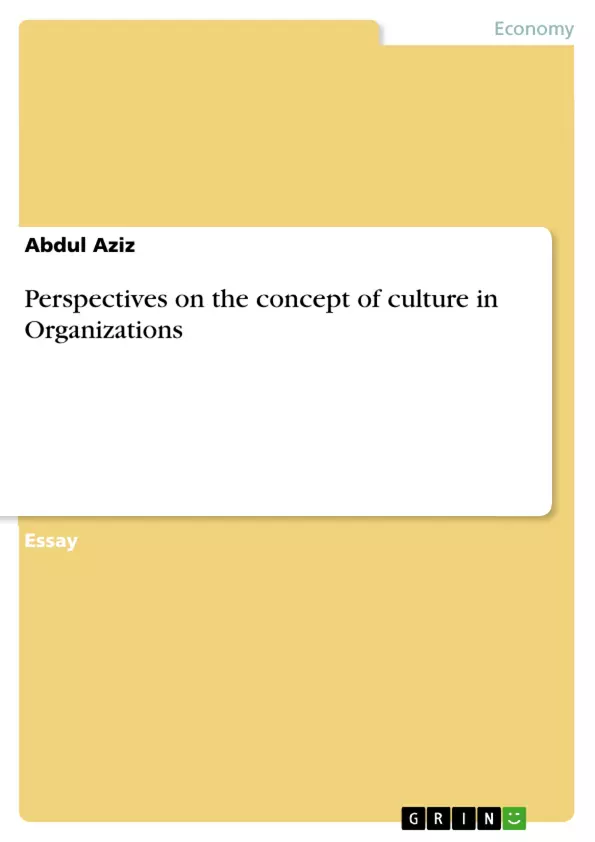The understanding and assessment of culture is a vital part of the management of an organization and the ability of managers to understand and assess the culture can play a crucial role in how effectively individuals and teams and organizations operate. Morgan (1998, p138) suggested the culture of an organization could be found in the ‘ organizational structure, rules, policies, goals, missions, job descriptions and standard operating procedures’….and this acted as a ‘primary points of reference for the way people think about and make sense of the contexts in which they work’.
There are a varied number of definitions of culture which encompasses the individual, local, national and global cultures that exist within organizations and individuals.
Dutch author, Hofstede (1984, p51) offered a broad and globally encompassing definition by suggesting ‘culture is the collective programming of the human mind that distinguishes members of one human group from another. Culture in this sense is a system of collectively held values’
Inhaltsverzeichnis (Table of Contents)
- Introduction
- Organizational Culture
- Modernist perspective
- Postmodernist perspective
Zielsetzung und Themenschwerpunkte (Objectives and Key Themes)
This text explores the concept of organizational culture by examining both modernist and postmodernist perspectives. The author aims to provide a comprehensive understanding of the various definitions, frameworks, and perspectives on culture within organizations.
- Defining organizational culture
- Modernist views of culture as a manageable phenomenon
- Postmodernist critique of the modernist approach
- Intertextuality and its influence on organizational culture
- The role of narrative and storytelling in shaping culture
Zusammenfassung der Kapitel (Chapter Summaries)
- Introduction: This chapter introduces the significance of understanding organizational culture for effective management. It presents various definitions of culture and highlights key figures in the field, such as Hofstede and Schein.
- Organizational Culture: This chapter delves into the complexities of organizational culture, noting its visible and invisible elements. It introduces the concept of a "system of shared meaning" as a way of understanding organizational culture.
- Modernist perspective: This chapter explores the modernist perspective on culture, emphasizing its understanding as a controllable and manageable aspect of organizations. Schein's three levels of organizational culture (artifacts and behaviors, espoused values, and assumptions) are presented and discussed. The chapter also explores how managers can shape culture through various strategies.
Schlüsselwörter (Keywords)
Organizational culture, modernist perspective, postmodernist perspective, intertextuality, narrative, artifacts, behaviors, espoused values, assumptions, socialization, practices, management, culture change, simulacra, fragmentation, integration, differentiation.
- Citar trabajo
- Abdul Aziz (Autor), 2015, Perspectives on the concept of culture in Organizations, Múnich, GRIN Verlag, https://www.grin.com/document/508171



